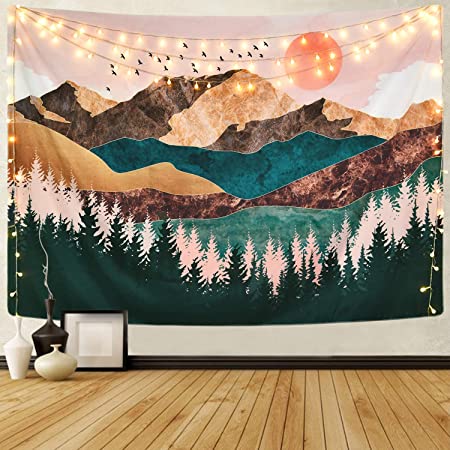Introduction
Tapestries are large, intricately woven cloths that have a long history. Tapestries were used as an illustration of sequestration to keep old castles warm during the cool months. While woven tapestries still exist in the modern world, shade now refers to any fabric that can be hung on your wall.
As you walk through a gallery, your attention is lost in the work area. Then suddenly, you see something amazing. The case is presented to you and you immediately begin to try to identify it. It’s not a fabric. It’s a shade, according to the wall marker!
European tapestries
Tapestries, especially European tapestries that were woven before the 20th century, are very rare and not commonly viewed. This makes it difficult to recognize and understand shades when they do appear. Tapestries can feel like other art forms, such as showpieces, canvas paintings, and published fabrics.
What is a shade?
A shade is a plain-faced weft weave with discontinuous, wefts that hide all its foundations. You can create a shade by simply weaving the weft vestments and underpinning together. Let’s take a closer look. Shade-weaving is simply a matter for simple computation.
A shade is a grid of vestments fixed to a large frame (also known as an impending). The foundations are the vertical vestments, while the wefts are the perpendicular vestments. The wefts can be described as a collection of many different pieces of hair and silk vestments in various colors.
Shade is created by weaving the perpendicular (weft), vestments over and underneath the vertical (underpinning) vestments. Also, squishing or tamping those perpendicular vestments so that they are really close together, so the vertical vestments are completely hidden from view.
vertical underpinning vestments
Even though you won’t be able to see them in the final shade, the vertical underpinning vestments make up the core of each piece. They are the backbone of all shades and provide support for the weft vestments. As if the foundations were a blank canvas, and the wefts as a makeup brush on that canvas. The weft vestments, which are made of different colors to create a particular shade’s picture, are called the weft vestments. They don’t weave in and around all foundations, they are only used where the design requires it.
They are also amalgamated in place, with their loose ends bobbed or partake in. The result is called “continuous wefts”. Tapestries are not painted, even though they look like they were drafted with brushstrokes. Use of makeup on the faces of shades was once a crime that could result in a severe penalty. Sometimes, a shade’s intro weave may be slightly altered to try to imitate, but certainly not recreate, other types of fabrics such as silks damasks velvets or inflated fabrics.
Something about the past
In the past, needleworkers used to work while facing the opposite shade. With their weft vests of colored weft, they copied the shade’s design. The “cartoon” design was made from cloth or paper and took the shape of a canvas. It was the same size as the shade’s planned shade.
The cartoon was either attached temporarily to the impending, visible through the gaps between foundations and the tails of the underpinning vestments; or it was hung on a wall behind needleworkers who saw its reflection in the glass behind foundations.
The cartoon-facing on the shade’s reverse was copied by needleworkers. When the piece was completed, it was removed from the impending and turned to reveal the front. This was the glass image of cartoon. This could be avoided by using the glass system to replicate the cartoon’s design. You could reuse the cartoon multiple times to create indistinguishable tapestries.
How Tapestries were woven in the past?
Tapestries have been woven by hand for centuries. However, technological innovations in the late nineteenth and early twentieth century allowed for machine-woven tapestries. Machine-woven and hand-woven tapestries are still produced by manufacturers, shops, and other businesses. Shade needleworkers may still use the traditional method, following a cartoon-like illustration, while others take full creative control and clap their designs as they weave.

